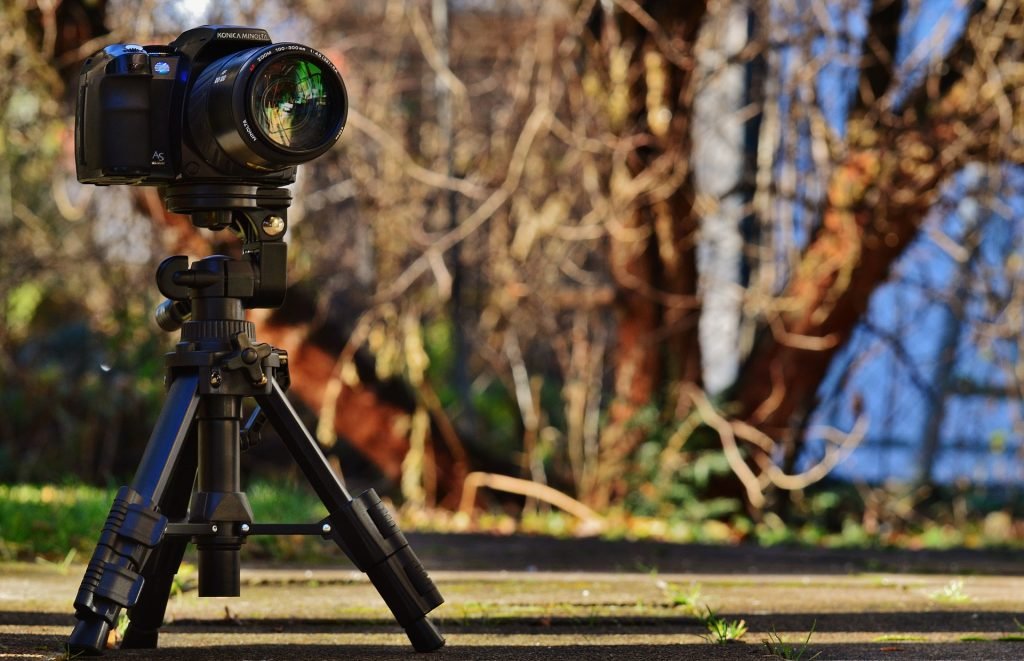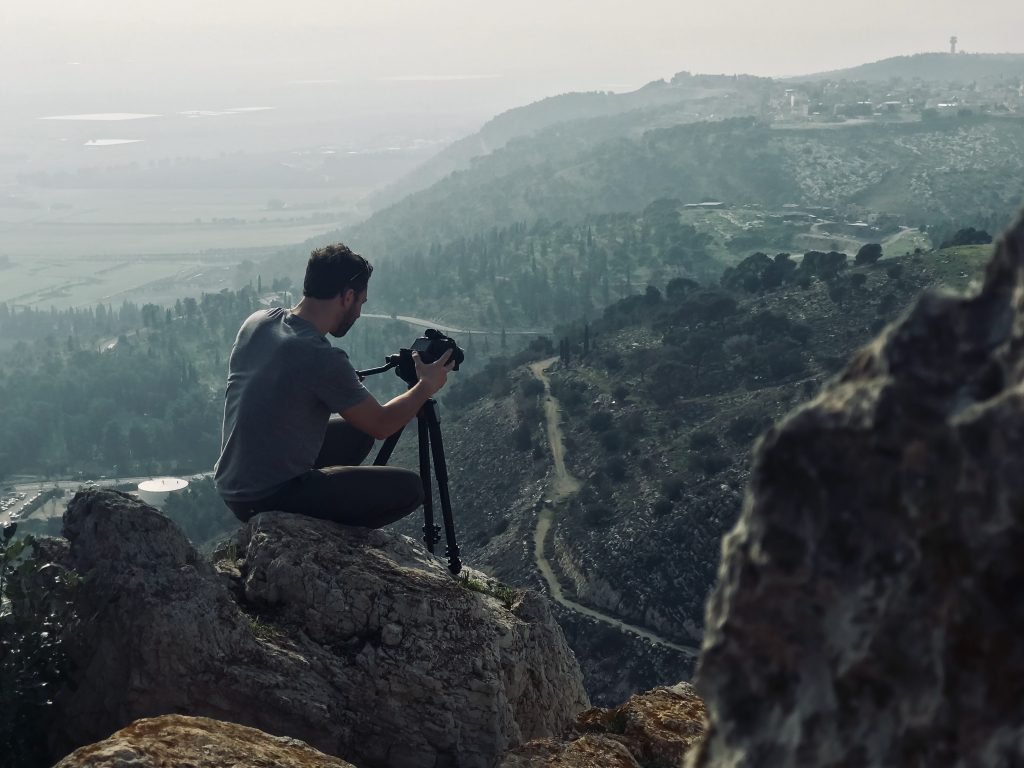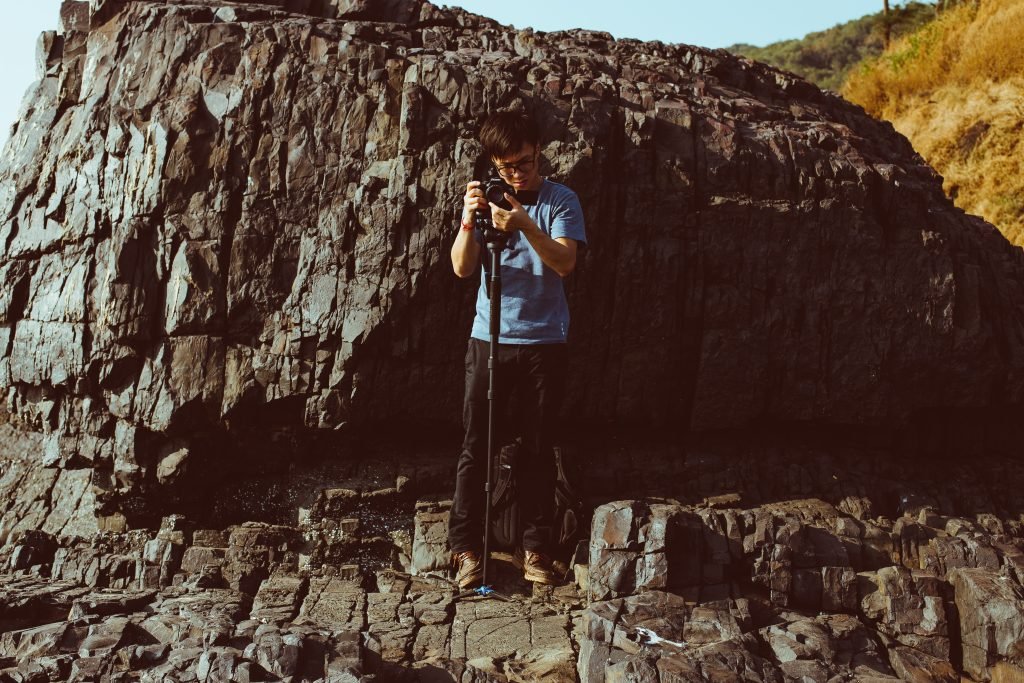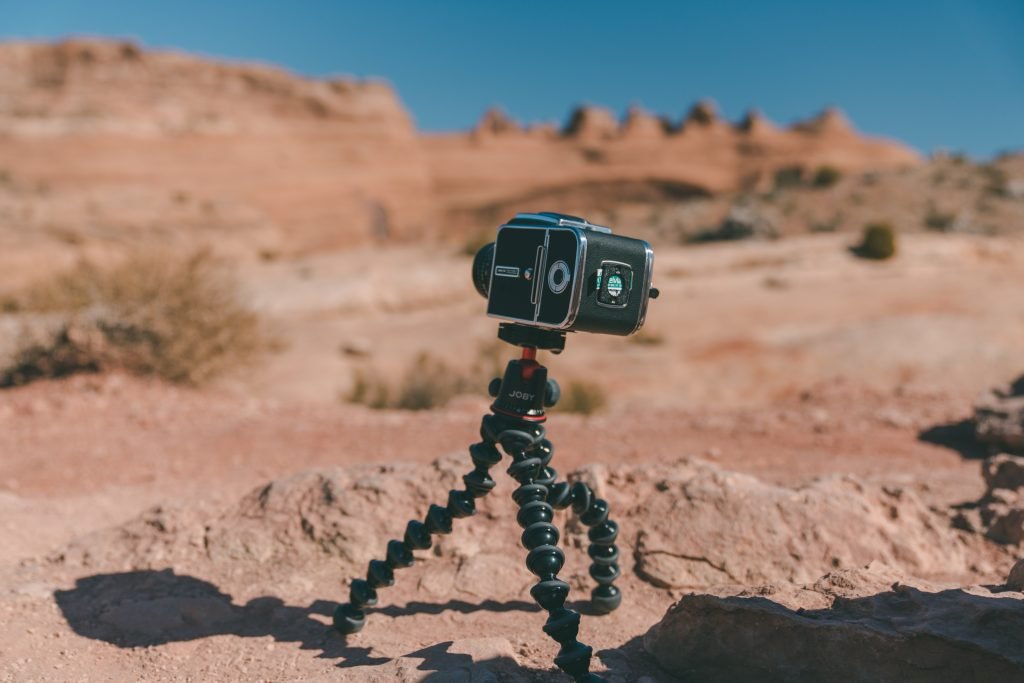Last updated on December 26th, 2023
Do you know how many legs a tripod has? Believe it or not, this question arises more often than you think. People are curious about the answer, and for good reason! A tripod is an essential piece of photography equipment.
Knowing its many legs can help you choose the right one for your needs. This definitive guide will explore the answer to this question and more!

How Many Legs Does a Tripod Have?
A tripod has three legs. Its naming comes from the Latin word “tripodis,” meaning “three-footed”, referring to its three-legged structure. This design provides stability and balance, making tripods useful for photography, surveying, and other applications where steady support is needed.
What Is the Purpose of a Tripod?
A tripod is a universal stand that you can use to support a camera or other equipment. It is necessary to take clear, steady photographs, especially in low light or when using a long lens. Use a tripod to support your video cameras, telescopes, and other optical devices.
Why Three Legs?
Three legs are the most common number for a tripod. They balance stability and maneuverability well. When you apply pressure on one of the vertices, it gets distributed evenly among the other two sides. Yet, one side always bears less weight in a square or rectangle.
Three legs also allow you to set the tripod on uneven surfaces. Mant choose uneven rather than flat surface. This is important when shooting in nature or other rough terrain.
What Are the Different Types of Tripod Legs?
Tripod legs can come from various materials, including aluminum, carbon fiber, and wood. They can also be different shapes, such as round or square. The legs of a tripod can also be adjustable, which helps get the height and angle that is perfect for your needs.

Understanding the Varied World of Tripods
Over the years, photography has seen the evolution of many tools and accessories. Among them, tripods have remained a steadfast companion for photographers. They have stability and precision. Photographers have a range of tripods to choose from. Of course, it depends on the specific requirements and the shooting environment.
Let’s delve into the different types of tripods and their distinct attributes:
Traditional Tripods
These are the quintessential tripods, synonymous with the term itself. They’ve adorned the arsenal of photographers for generations.
You can change the height by extending or retracting the legs because of the three legs. A central column connects these legs while holding the camera secure on top. The beauty of traditional tripods lies in their versatility. They are available in various sizes.
They are also crafted from sturdy aluminum or lightweight carbon fiber. The choice of material is vital in determining how stable and portable the tripod is.
Moreover, they accommodate diverse head types. Choose ball heads for flexible movement. Pan-tilt heads are for horizontal and vertical adjustments. You can also choose gimbal heads for balancing heavier camera setups.

Travel Tripods
Travel tripods are the nomads of the tripod family. If you are a globe-trotter, the travel tripod is your best choice.
Travel tripods focus on portability. They’re constructed from lightweight materials. They can be compact to a small size, making them an easy fit in backpacks.
Since they have a small stature, they might not match the tall versions.
Studio Tripods
Studio tripods are the giants in the camera gear family due to their outdoor uses. They are durable and strong. They work best for carrying hefty camera equipment.
Their height range is often the tallest of them all. Choose this type of tripod for shoots where you need elevation. They are often made with wheels for better mobility in studios.

Monopods
Monopods come with a singular leg, which is a simplified tripod concept. They’re a handy tool when the photographer needs mobility. They also reduce camera shake.
While they provide support, they don’t stand up on their own. So if you need to leave your camera unattended, this version may not be the best choice.
Tabletop Tripods
These miniature tripods are perfect for close-up shots. They perch atop tables or flat surfaces. This type of tripod is a favorite of macro photographers. They allow you to achieve intricate details when you need the closest shot.

Flexible Tripods
These tripods flaunt legs you can contort in many ways. And they are the most innovative in design. You can anchor them to a tree branch or mold them to a rugged terrain. Their adaptability makes them a favorite among adventurous photographers.
Pocket Tripods
As the name suggests, these are the minimalists of the tripod world. The pocket tripod works best if you’re on the go. They can easily fit into your pockets, offering a quick setup whenever needed.
Specialized Tripods
Specialized tripods come into play for those niche photographic endeavors. You can find geared heads for incremental adjustments. You can also get to pano heads for panoramic shots. They cater to specific photographic needs, ensuring every shot is a masterpiece.
Final Thoughts
So, how many legs does a tripod have? The answer is three legs, but some models have different numbers of legs. The number of legs is one of the main factors you should consider when choosing a tripod.
The number of legs will affect the stability and maneuverability of the device. Three legs are the most common number for a tripod. They balance stability and maneuverability well.
Three legs also will allow you to set up the tripod on uneven surfaces. This is important when shooting in nature or other rough terrain.
FAQ
Is a Camera Tripod Worth It?
A tripod is worth it if you photograph landscapes or architecture often. Tripods help keep your camera still and cut out blurriness, providing sharper images. They’re also great for night photography. Why? Well, they help keep your camera steady in low-light conditions.
How Much Should I Spend on a Tripod?
The amount you should spend on a tripod depends on your needs and budget. You can find good quality tripods for under $100. But if you need something more professional-grade, you may have to spend closer to $1000.
What Is the Best Material for a Tripod?
The best material for a tripod depends on your needs. Aluminum tripods are lightweight and portable. At the same time, carbon fiber tripods are solid and durable. Wood tripods are also an option, but they are often more expensive.


